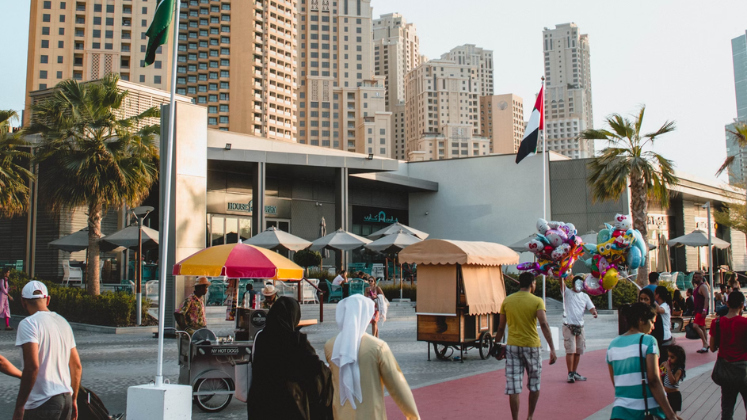Note: This article was originally published on the earlier LSE Religion and the Public Sphere blog.
Tania Saeed’s book looks at the experiences of young Muslim women across England, highlighting the anxieties of young Muslims who constantly feel targeted because of their religious beliefs. It finds that Muslim students are actively challenging Islamophobia on campuses through dialogue, taking charge of the narrative that informs their daily lives.

Bassem Youssef, an Egyptian comedian now based in the US, captures the fear and anxiety of law-abiding Muslims through a parody called the “Muslim morning After kit”, referring to the Islamophobic vitriol that follows a terrorist attack committed by individuals acting in the name of Daesh or other so called ‘Islamist’ groups. The parody, released in August 2017, focuses on the American Muslim, yet these Islamophobic experiences are a reality for many Muslim communities living in Europe and the UK as well. This vulnerability has further increased as lone terrorists inspired by groups such as Daesh have created terror and havoc not through bombs but by driving regular vehicles into pedestrians in large gatherings. The Muslim terrorist is no longer just carrying a ‘suspicious’ looking backpack, but is behind the wheel, lurking in our midst, ready to attack.
In order to counter these terrorist threats, the UK government has introduced counter terrorism policies that have gradually crept into the mundane. Schools, universities, community centres, and mosques have been drawn into the counter terrorism apparatus, attempting to look out for individuals at risk of radicalisation, the majority of whom are believed to be Muslim. More recently, the Counter Terrorism and Security Act 2015 has placed a statutory duty on educational institutions to report on students vulnerable to radicalisation and extremism. Yet these signs of radicalisation continue to be debated, where cases of students wrongfully reported have also emerged. In my book Islamophobia and Securitization. Religion, Ethnicity and the Female Voice I explore the experiences of such young Muslim women, either students or graduates of universities located across England. These women, like the majority of the 2.79 million Muslims in Britain, are law-abiding citizens who are as much at risk from terrorist attacks as their fellow citizens. The study, undertaken from 2010 to 2012, highlight the anxieties of young Muslims who constantly feel targeted because of their religious beliefs.
Far from representing all Muslim women, the study focuses in depth on the experiences of forty British Muslim women with a Pakistani heritage and Pakistani Muslim women who are studying or working in the UK. The book challenges the notion of any one authentic British Muslim narrative – the different perceptions about identity and belonging and the varied responses to Islamophobia highlight a diverse community of individuals who cannot be confined to a single category, especially not one limited within the moderate/extremist spectrum. The women in this study practice different degrees of religiosity determined through their physical appearance, ranging from face veils (niqabs), and head scarves (hijabs or those with hijabs and long gowns) to the Pakistani ‘cultural’ dress (‘shalwar kameez’), to those without any religious signifiers. As expected, women who wear the niqab and the hijab face the most direct form of Islamophobia, both on and off university campuses. Women share experiences of being spat at; called a terrorist, ninja and in many cases even a ‘lesbian’, reflecting the heteronormative position of the Islamophobe. While women wearing the niqab and hijab are the most vulnerable, followed by those who wear the shalwar kameez, those without religious signifiers also share experiences of having to prove that they are Muslim enough, both to non-Muslims and overtly religious Muslims.
In refocusing the lens on ethnic identity, the book further highlights how the intersection between two ‘suspect’ identities can lead to a ‘hyper securitized’ experience, in this case the connection between being Muslim and Pakistani. The study was conducted at a time when the ‘Af-Pak problem’ was at its height with the ‘war on terror’ being fought in Pakistan and Afghanistan. The combination of being Muslim and Pakistani generated greater suspicion with some participants calling it Pakophobia, a form of Islamophobia – especially those women who were Muslim but did not wear a religious garb or ‘look Muslim’. Experiences varied from being called a ‘T.W.A. – Third World Assassin,’ to dealing with stereotypes about Pakistan in classroom conversations, or in exams. This ethno-religious conflation is important in highlighting how experiences of Islamophobia may vary across different Muslim communities, based on the vulnerability of not just their Muslim identity within the security narrative but also other identities such as ethnicity. Given the threat from Daesh, the Syrian identity is the most vulnerable at this point. Such vulnerability is further evident in countries like the US and the Trump administration’s attempts to impose a Muslim ban that targets specific Muslim countries, not the entire ‘Muslim world.’
The book also focuses on the Muslim student identity that has come under scrutiny in the aftermath of individuals such as Umar Farouk Abdulmutallab, Roshonara Choudhry or the problematically named ‘jihadi brides.’ Islamic Student Societies (ISocs) in particular have faced the brunt of suspicion, with ISoc sisters sharing difficulties in organizing speaker events (which are often cancelled at the last minute), booking venues within universities and being accused of being terrorists by fellow students, including the self proclaimed ‘moderate’ Muslims. However, far from being passive, Muslim students are actively challenging Islamophobia on campuses and in their communities through the simple act of dialogue. Believing that Islamophobia is the result of a misunderstanding or lack of knowledge about Islam, young Muslims have taken on the responsibility of engaging with others, whether as ISocs through Islamic Awareness events or at an individual level by having one-on-one conversations about their religion. Muslim students are also increasingly participating in the student union, and other student societies outside their ISocs, in an effort to ‘normalize’ Muslim student presence. While narratives also highlight the unfair nature of this responsibility where law-abiding Muslims have to prove their innocence, or raise awareness about their identities, others believe that they have to take charge of the narrative that informs their daily lives.
These narratives of resistance through dialogue are often displaced or absent from mainstream reporting on Muslims. These are the voices that need to be emphasized. The efforts of young Muslims working in pockets within their universities and communities to fight against Islamophobia need to be recognized.
About the author
 Dr Tania Saeed is an Assistant Professor in the Mushtaq Ahmad Gurmani School of Humanities and Social Sciences at the Lahore University of Management Sciences (LUMS). Her research examines issues of security, education and social justice in the context of the UK and Pakistan.
Dr Tania Saeed is an Assistant Professor in the Mushtaq Ahmad Gurmani School of Humanities and Social Sciences at the Lahore University of Management Sciences (LUMS). Her research examines issues of security, education and social justice in the context of the UK and Pakistan.
Note: This piece gives the views of the author, and not the position of the LSE Religion and Global Society blog, nor of the London School of Economics.





